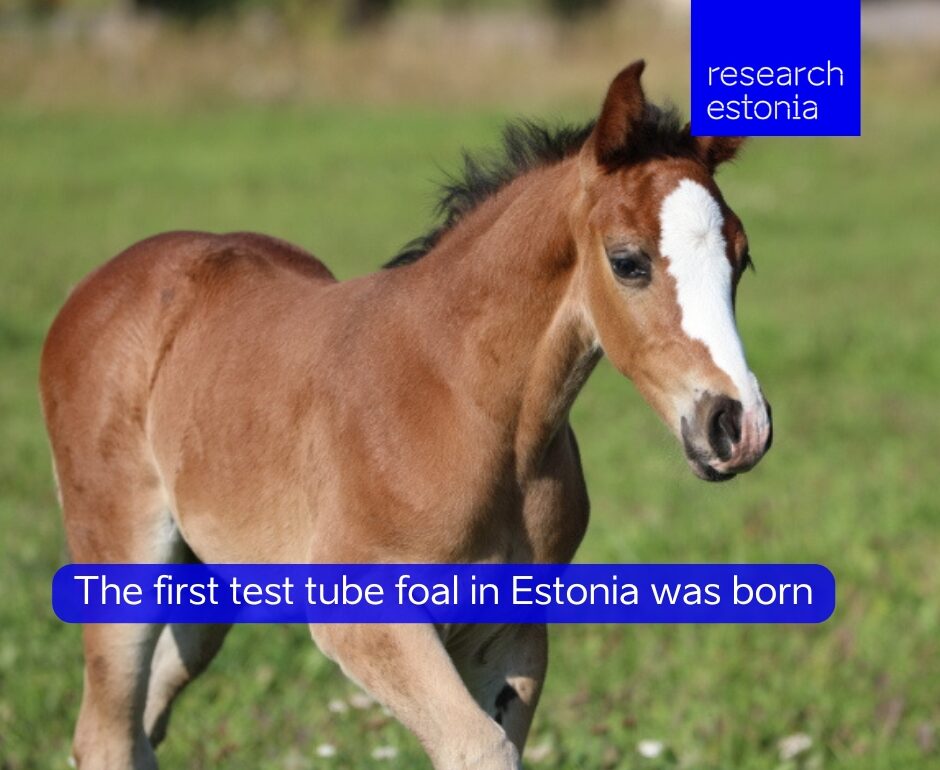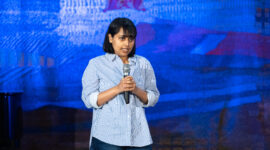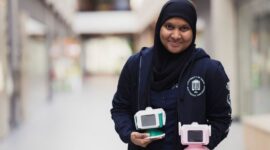The first test tube foal in Estonia was born on August 21st, the first horse foal created in a test tube in Estonia and transferred into a surrogate mare was born at the Luunja stable. The young colt is named Endex and is growing well.
The embryo, created in vitro under laboratory conditions by scientists and veterinarians at Estonian University of Life Sciences, was transferred nearly a year ago. The foal’s biological mother is a 6-year-old mare named Electra, who also lives at the Luunja stable and is a promising sport horse. The foal’s sire is one of Europe’s top stallions, Ermitage Kalone from Belgium, who competed in the Paris Olympic Games this year. Endex’s surrogate mother is a horse named Miss Dior from the Luunja stable, who is taking good care of the foal.
One of the main reasons for creating test tube foals is that mares involved in top-level sports are not bred due to their athletic careers. Another reason is the high cost of elite stallion semen – in laboratory conditions, a single straw of semen can be used to produce hundreds of embryos, allowing the best genetic combinations to be passed on to many offspring.
Embryologist Elina Tsopp from Estonian University of Life Sciences said that this achievement is the result of great teamwork. “We started the project three years ago. Such applied science projects always involve a certain element of unpredictability, and we experienced both highs and lows. Without the veterinarians and supportive partners, it would not have been possible to achieve this outcome,” acknowledged Elina Tsopp.
Today, more test tube embryos are produced for horses than traditional embryos. Until now, five laboratories in Europe have offered the service of creating and transferring test tube embryos (OPU-ICSI).
The Luunja stable, in collaboration with scientists from Estonian University of Life Sciences, is establishing a horse biotechnology center in Luunja, which will provide this service to Estonian and European horse breeders starting from this October.
The embryo project team includes scientists from Estonian University of Life Sciences: Ulrika Tuppits, Ants Kavak, Anni Viljaste-Seera, and Andres Reilent, along with embryologist Elina Tsopp. Key collaborators are the Luunja stable, led by Sven Šois and Urmas Raag, and the Perila stable, led by Kristiina Pähn and Erik Aedviir.
This summer, scientists at Estonian University of Life Sciences were also successful in creating a cloned horse embryo. In August, the cloned embryo was successfully transferred into a surrogate mare at the Luunja stable, and if all goes well, Estonia’s first cloned horse foal is expected to be born next August. Horse cloning is primarily important for preserving horse breeds.
Additional information: Elina Tsopp, Embryologist
Estonian University of Life Sciences, elina.tsopp@emu.ee
+ 372 5552 8470
If this glimpse into the animal kingdom has you itching for more, trot over to our next article where we uncover the hidden survival secrets of wildlife! Read more about how Estonian expatriate scientist challenged the notion of male mammals being larger than females!
 Back
Back



